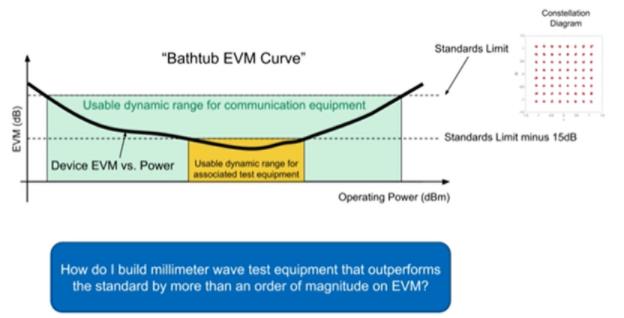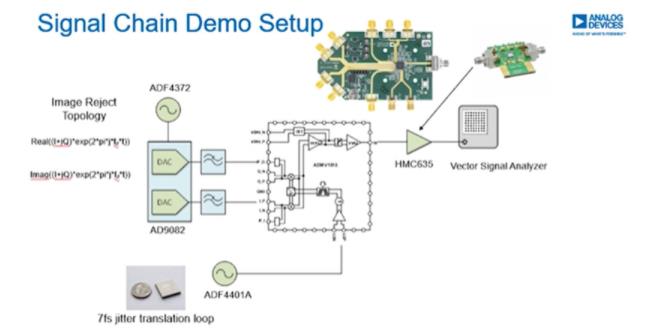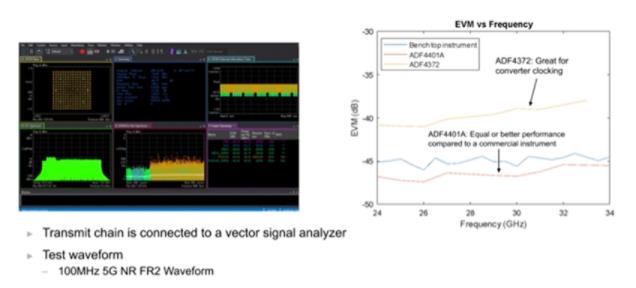Now, millimeter-wave PCB frequencies in the range of about 20GHz to 110GHz are becoming increasingly popular because higher bandwidth is available at millimeter-wave frequencies. As semiconductor technology continues to evolve, more and more millimeter-wave frequency devices are available, but the instrumentation for testing and measuring millimeter-wave devices can be very complex. The challenge facing the communication testing industry is how to make instrumentation solutions meet the test volume requirements of millimeter wave equipment.
In the design of such devices, high-performance signal chains are critical, such as high-speed converters with the performance required to achieve the latest technology broadband wide transmitting and receiving channels, high-performance PLLS, orthogonal modulators and demodulators, broadband mixers, broadband switches, and attenuators, And a complete family of transceivers, data converters, and RF components also play a critical role. As a provider of high-performance simulation technology, ADI company can provide various solutions to meet the requirements of communication test equipment. This paper analyzes how to build the instrument level millimeter-wave transmission signal chainfrom several core components of ADI company.
Measure the importance of EVM for performance indicators
The amplitude of error vector (EVM) is a scalar measure of digital modulation accuracy and is an important quality factor for any digital modulation signal source. It is important to implement low EVM in the transmitter modulator because the EVM of a signal will deteriorate as it passes through each component of the transmit/receive the link. The transmitter up-conversion converter, filter, power amplifier, receiver, and even the communication channel can impair the signal quality.
The following figure shows the EVM bathtub curve for a radio device, which shows the dynamic range available for the device at operating power. Since the EVM target for instrumentation solutions is usually an order of magnitude lower than most standard limits, if the limits are applied to the same device, the available range of the device is narrowed. How to build EVM performance above standard is not a small challenge.

millimeter-wave transmission signal chain
How to build high-quality millimeter-wave test equipment with the order of magnitude gap
In most cases, the component selection and optimization can significantly improve the EVM entry, but it may not be enough, through the reconfiguration system, can use the noise performance for linearity performance, make the curve to the right, of course, also can do opposite things, to configure the system to achieve better noise performance, curve move to the left, after reconfiguration, You can create a new bathtub curve that is an order of magnitude better than the original design, as shown in the figure below. In this setup, designers can construct millimeter-wave transmission signal chain using a high-speed digital-to-analog converter, a millimeter-wave upconverter, an ultra-low phase noise conversion loop device, and an amplifier.

The complex if the topology is used in the millimeter-wave transmission signal chain because the filtering can be simplified and the overall performance can be achieved. The complex if is first created using a mixed-signal front end (MxFE) device AD9082, which contains four dacks, each operating at 12GSPS, that can generate the complex if waveform directly using a built-in digital modulator. These if signals, 90° apart, are then fed to the ADMV1013, an integrated millimeter-wave upconverter with a built-in frequency doubler and a tunable LO filter. The carrier signal is then generated using the conversion loop device ADF4401A for the upconversion operation. The carrier signal generated by this device has a very tidy spectral content and ultra-low phase noise. Finally, the output of the MMW modulator is connected to the MMW frequency amplifier HMC635, and the output of the result is connected to the vector signal analyzer.

In addition, the carrier feed-through effect can be significantly reduced using the LO zero function integrated into the ADMV1013 device. LO feed-through elimination and sideband reduction will help simplify the filter required for the signal chain. In this setting, the sideband is reduced by -35DBC and the carrier feed-thru is reduced by -30DBC without additional calibration. Further improvements can be achieved through calibration.
Turning to the EVM performance on the transmission chain, the output of the transmission chain is connected to a commercial vector signal analyzer, which again results in a test vector width of 100MHz and a new 5G radioFR2 waveform with 256 orthogonal amplitude modulation. As shown in the following figure, the EVM performance on all frequencies is very good. The standard EVM limit is about -30DBC. The EVM shown in the figure is about 15dB lower than the standard limit. Note that there are multiple bathtub curves for each configuration of the system, and at lower power levels the final amplifier in the signal chain is bypassing, which helps to give noise performance precedence over linearity performance. As the output power increases, the device is configured for linearity performance over noise performance, resulting in a much wider EVM bath curve, demonstrating that system-level EVM performance can be improved by reconfiguring the system.

With the development of technology, more and more industries and applications are beginning to use millimeter-wave frequencies, but the equipment required for millimeter-wave testing has extremely high-performance requirements. ADI offers a wide range of devices to build instrumentation level millimeter-wave PCB transmission signal chains , supporting customers to develop differentiated systems for the emerging millimeter wave market.